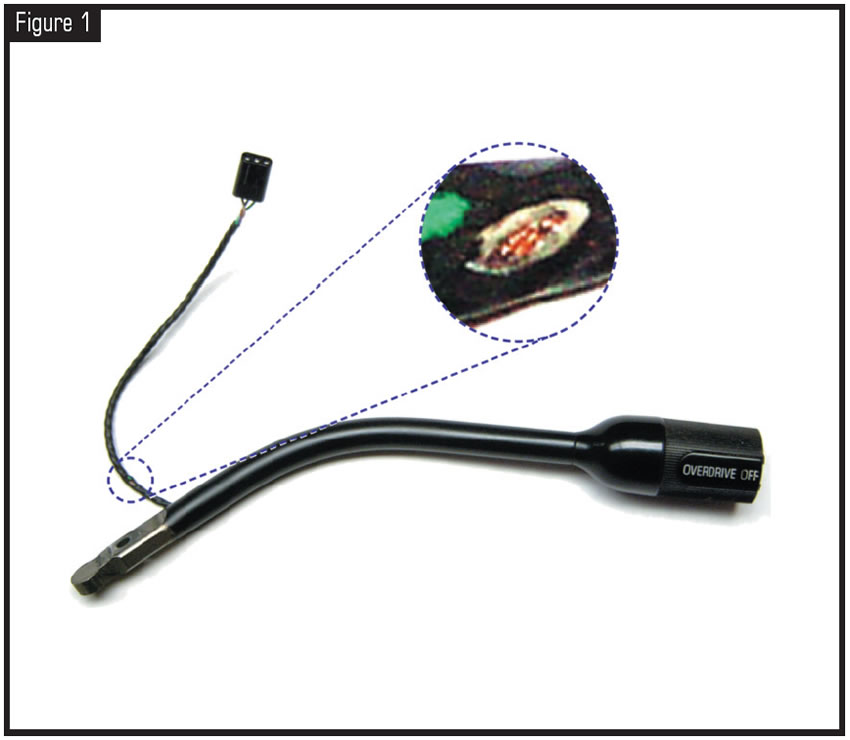
TASC Force Tips
- Author: Ed Lee, Deltrans
On Oct. 21, 1992, Ford issued Technical Service Bulletin (TSB) 92-22-5. The bulletin refers to the models affected as light truck: 1992 Bronco, F Super-Duty, F-150/350 Series. However, any vehicle equipped with an E4OD/4R100 and an OD-cancel button on the column-mounted shifter has the possibility for this problem.
The concern addressed in the bulletin is that the wiring from the overdrive switch may not be routed properly and may come into contact with a steering-column-cover mounting screw and cause a short. This short will blow the #17 fuse.
The following symptoms are listed in the bulletin as possibly being associated with this concern:
- Early shifts
- Loss of power
- Poor acceleration
- 3-4 shift cycling
- Transmission control light cycling ON/OFF or inoperative
- Transmission control switch inoperative
- Rear anti-lock-brake system (RABS) electronic (dash lights on) inoperative
- Loss of instrumentation (tachometer, fuel gauge etc.)
- Unable to read self-test codes (solid tone only)
One of the complications of the loss of the #17 fuse is that it renders the RABS electronics inoperative. These problems seemed bad enough at the time, but in 1995 things got a lot worse. In 1995 some Ford trucks were equipped with drive-by-wire throttle control. The early-model drive-by-wire throttle control received its power from the powertrain control module (PCM), which is powered by the #17 fuse. The late-model drive-by-wire throttle control is powered by the PCM, which receives power from the #19 fuse. Ironically, the late-model OD-cancel switch is also powered by the #19 fuse.
The fact is that even normal road vibrations may cause the wiring for the overdrive switch to short against the shift column. The most-common location for a short is near the shift-lever pivot point (see Figure 1).

When the power to the drive-by-wire throttle control is lost (blown fuse), the vehicle’s engine immediately returns to idle. Since these vehicles will not even pull their own weight at idle, you will go only as far as the vehicle will coast. The driver can only hope that he is not on a railroad grade crossing or in the center lane of the Long Island Expressway when this occurs.
To prevent this problem on these vehicles, you may want to pull the shift lever and put an extra piece of heat-shrinkable tubing over the wire in areas of potential shorts. An even better idea may be to isolate the two circuits and provide a separate fused circuit for the throttle control, or relocate the overdrive-cancel button.
If you are driving one of the affected vehicles, you may want to keep an extra 10-amp fuse in your possession or determine which other 10-amp fuses in the fuse box do not affect the driving of the vehicle (emergency donor fuse).
The replacement lever, part #F2TZ-7210-F, has a pigtail that is longer than the original OD-switch wiring. This extra length will give you some room to reroute the wire.
Exercise caution when installing the boot that is on the lever where it meets the column to make sure that it is not pushing on the wire.
The transmission industry thanks Ford for this TSB, and now we must step up to the plate and help make these vehicles safer.
Special thanks to Matthew Hetrick and David Carothers of Deltrans Inc. for their assistance in writing this article.
The The TASC Force (Technical Automotive Specialties Committee) is a group of recognized industry technical specialists, transmission rebuilders and Sonnax Industries Inc. technicians.














